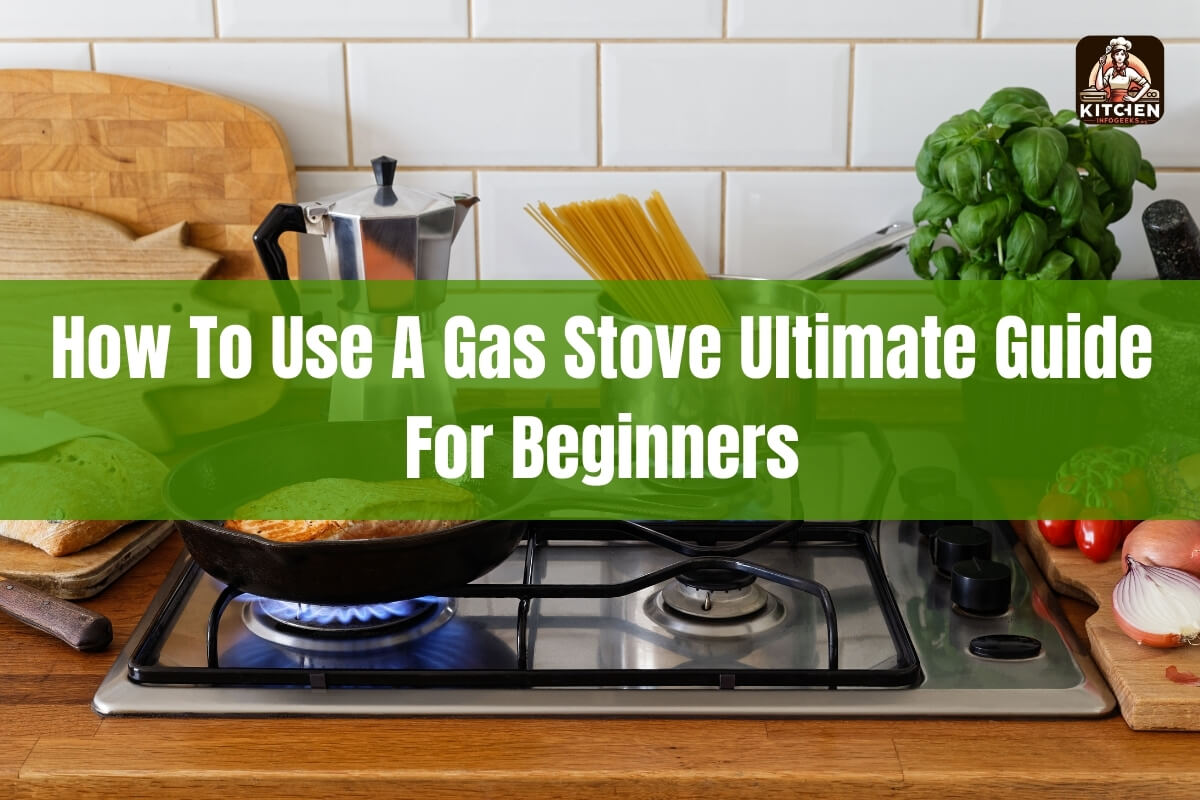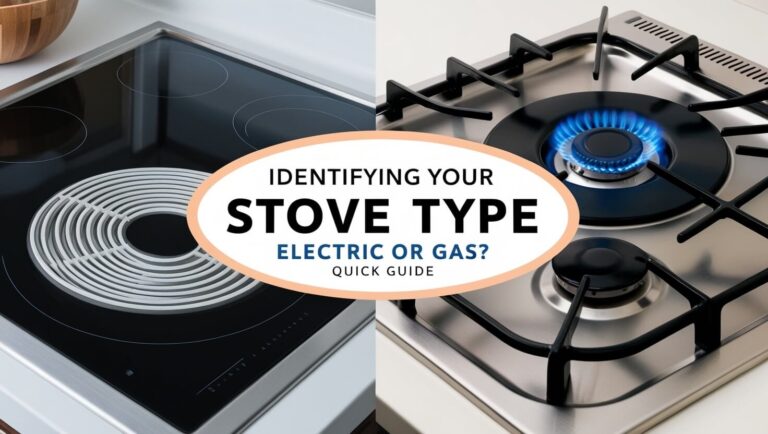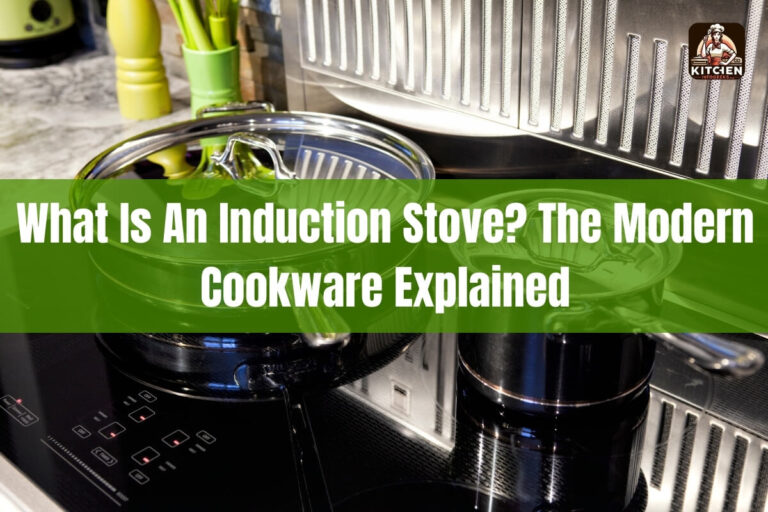
Are you wondering how to use a gas stove safely and efficiently? This comprehensive guide has all the answers. From lighting the burners to controlling the flame, choosing the right cookware and cleaning the stove properly – this post covers everything you need to know about using a gas stove like a pro.
Gas stoves are a popular choice for home cooks because they offer quick heating, precise temperature control, and even heat distribution across cookware. However, if you’ve never used a gas stove before, the process can seem a bit daunting. Fear not! This guide will walk you through each step, ensuring you can start cooking delicious meals on your gas stove with confidence.
Getting Started with Your Gas Stove
Before we dive into the specifics of operating your gas stove, let’s take a quick look at the different components and safety precautions to keep in mind.
Understanding the Parts and Controls
A typical gas stove consists of:
- Burners: The rings or circles on the cooktop surface where the flames come up. Most stoves have four burners of different sizes.
- Grates: The metal racks that sit on top of the burners, designed to hold your pots and pans.
- Knobs/Dials: The controls used to turn the burners on and off, as well as adjust the flame intensity (low, medium, high).
Get familiar with the positions and markings on your stove’s knobs/dials as they will let you control the heat output.
Safety First – Ventilation and Precautions
Proper ventilation is crucial when using a gas stove to allow any combustion gases to escape. Make sure your kitchen is well-ventilated by turning on the exhaust fan or opening a window.
Additionally, follow these safety tips:
- Keep it clear: Tie back long hair, roll up loose sleeves, and avoid wearing loose clothing that could catch fire. Wear non-slip shoes or slippers.
- Flammable-free zone: Never place flammable items like towels, oven mitts, or curtains near the gas stove when in use.
By taking some simple precautions, you can ensure a safe and enjoyable cooking experience.
How to Light a Gas Stove
One of the first things you’ll need to learn is how to properly light the burners on your gas stove. The process may vary slightly depending on your stove model.
Using the Igniter (Electronic Ignition)
Most modern gas stoves come equipped with an electronic igniter, making the lighting process a breeze:
- Push in the knob for the burner you want to light while turning it to the desired heat setting (low, medium, high).
- You’ll hear a clicking sound – this is the igniter sparking to light the gas.
- Once the burner is lit, release the knob and adjust the flame level as needed.
If the burner doesn’t light right away, check that the burner holes and igniter are clean and free of any food debris blocking the gas flow. A quick cleaning with a toothpick or brush usually does the trick.
Manually Lighting with Matches/Lighters
In the event of a power outage or if your igniter isn’t working, you can light your gas stove manually using matches or a long-reach lighter:
- Hold a lit match or lighter close to the burner before turning the knob.
- Slowly turn the knob to allow gas to flow. The flame from the match will ignite the burner.
- Quickly remove your hand once lit to avoid getting burned.
Always use long fireplace matches or a long-reach lighter for safety. Never let your hand get too close to the open flame.
Older Models – Checking the Pilot Light
Older gas stove models often have a constantly burning pilot light instead of an electric igniter. Check your owner’s manual, but you’ll likely need to locate and ensure the pilot light is on before the burners will ignite.
If the pilot light is out and you smell gas, promptly exit your home and call your gas company or emergency services, as there may be a dangerous leak.
Adjusting the Flame and Cooking
Once your burner(s) are lit, it’s time to adjust the flame level based on your cooking needs and chosen cookware.
Controlling the Heat Level
The key to controlling your gas stove’s heat output is the knob/dial positions:
- Low: A small, simmering flame perfect for slowly cooking sauces, heating delicate foods, or keeping things warm.
- Medium: A steady, moderate flame for cooking most foods like sautéing vegetables or frying eggs.
- High: The highest flame output used for quickly boiling water or searing meat over high heat.
Simply turn the knob to the desired setting to increase or decrease the flame size accordingly.
Choosing the Right Cookware
For best results, use cookware designed for gas stoves:
- Flat, smooth bottoms: This allows for maximum surface contact with the burner for even heat distribution.
- Straight sides: Sloped sides can cause uneven heating.
- Tight-fitting lids: Lids help lock in moisture and flavor.
- Quality materials: Look for cookware made from cast iron, stainless steel, enameled cast iron or aluminum – good heat conductors.
Additionally, match your pot/pan size to the corresponding burner size to maximize efficiency.
Tips for Even Heating and Cooking
Here are some handy tips to help you master cooking on a gas stove:
- Use different burner sizes: Take advantage of the various sized burners – smaller ones for simmering sauces, larger ones for frying or boiling.
- Take advantage of instant heating: Gas gives you heat right away, so you don’t need to preheat as long as with electric stoves.
- Watch for hot spots: Gas flames can create hotter areas, so rotate your pans periodically for even browning.
- Allow ventilation: Be sure to use your exhaust fan or open a window while cooking to allow proper ventilation.
With a bit of practice, you’ll be a gas stove cooking pro in no time!
Cleaning and Maintenance
To keep your gas stove working efficiently and looking its best, regular cleaning is a must. Here are some simple tips for daily and deeper cleaning.
Daily Cleaning Routine
Get in the habit of giving your stove a quick tidy after each use:
- Remove grates/caps: Take off the burner grates and caps and soak them in hot, soapy water to remove any stuck-on food.
- Wipe down the surface: Use a damp cloth to gently wipe away crumbs and spills from the cooktop. Try a 50/50 vinegar and water solution for tougher, dried-on messes.
- Clean knobs/back panels: Check for any food splatter and give the knobs and back panels a quick wipe down.
This light daily cleaning prevents major buildup over time.
Deep Cleaning (Occasional)
For a deeper clean every few weeks or months:
- Soak grates: Place burner grates in a sink with a 50/50 vinegar solution and let soak for 30-60 minutes. Scrub with a non-abrasive brush or sponge.
- Use baking soda: Make a baking soda paste by mixing with water and use it with a non-scratch pad to help lift stuck-on grease and food.
- Clear burner holes: Use a toothpick, needle or compressed air to clear any clogged burner holes that could affect gas flow.
Refer to your owner’s manual for any manufacturer’s specific cleaning instructions as well.
Gas Stove Safety
While convenient and easy to use, gas stoves do require some basic safety precautions to prevent accidents or injury.
Potential Hazards
The two main hazards to watch out for are:
- Gas leaks: An unmistakable rotten egg smell or hissing sound could indicate a gas leak which can be highly dangerous.
- Grease fires: Food splashing or dripping onto the burners can potentially ignite into a dangerous grease fire.
Prevention Methods
Avoid these hazards by:
- Never leaving the stove unattended while in use. Always monitor what you’re cooking.
- Keeping a fire extinguisher nearby in the kitchen in case of grease fires. Baking soda can help smother smaller fires too.
- Turning the stove fully off after use by returning the knob(s) to the original position.
If you do smell gas, immediately evacuate the area and call your gas company or emergency services from outside the home. Do not use any electrical switches or create any source of ignition.
In the event of a grease fire, smother it immediately by covering the pan with a lid or baking sheet to cut off the oxygen supply. Never try to extinguish it with water as this can cause the fire to spread. Keep a box of baking soda near the stove to dump on smaller contained fires. For larger, out-of-control fires, use your fire extinguisher and evacuate the home if needed.
It’s also a good idea to keep the number for the fire department and your gas company’s emergency line readily accessible in your kitchen, just in case. While gas stoves are generally very safe when used properly, it’s always better to be prepared.
Gas Stove Cooking Tips and Tricks
Now that we’ve covered all the essentials of operating and maintaining your gas stove safely, let’s explore some cooking tips to help you get delicious results every time!
Meal Ideas and Recipes
A gas stove is exceptionally versatile for all types of cooking, including:
- Breakfast foods: Use the griddle function or largest burner for perfect pancakes, fried eggs, home fries, etc.
- Grilled sandwiches and burgers: Take advantage of the even heating across the whole pan/griddle surface.
- One-pan/skillet meals: The controllable heat makes sautéing, searing, baking all possible in one pan.
- Baked goods: Many bakers prefer gas ovens for temperature accuracy when baking breads and desserts.
With a little creativity, you can cook just about anything on your gas range or stove. Search online for tons of gas stove-specific recipe ideas!
Pro Tips from Chefs
To take your gas stove cooking skills to the next level, keep these chef-recommended tips in mind:
- Preheat your stove and pan properly: This helps ensure even cooking from the start. Gas gives you heat fast, so don’t skip this step.
- Go for cast iron or carbon steel cookware: Their superior heat retention and distribution works exceptionally well on gas flames.
- Control flare-ups: When searing fatty meats, use a lower heat setting and reposition the pan slightly off-center to avoid big flame flare-ups.
- Rotate pans periodically: This accounts for potential hot spots created by gas flames and promotes even browning.
- Use the right flame height: Match the flame size to your pan – too small and you’ll get uneven heating and hot spots.
With the right techniques and quality cookware, you’ll be cooking like a professional chef right at home!






